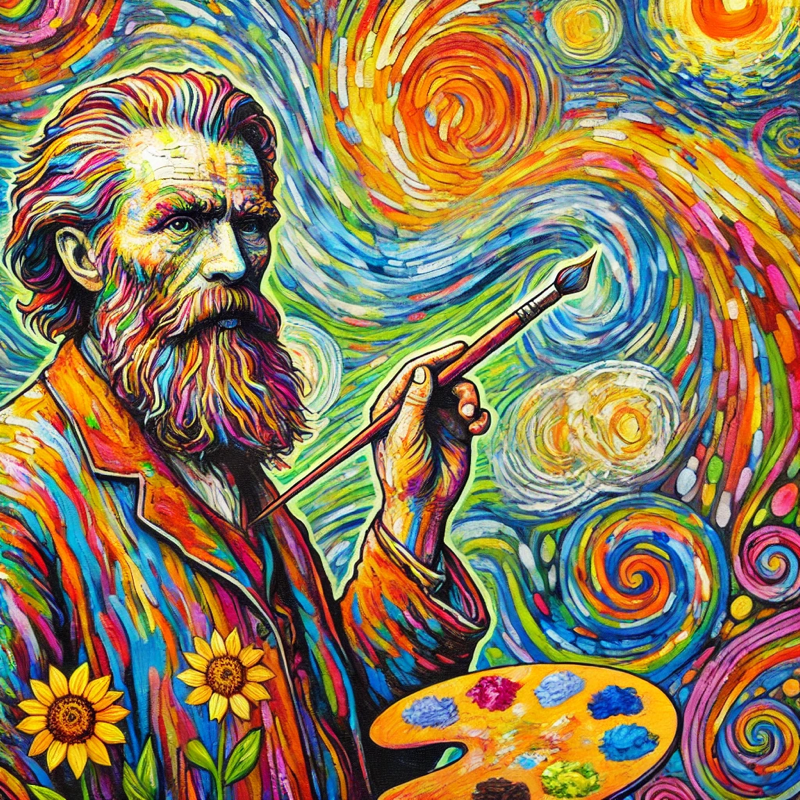The Controversial Canvas: The Life and Trials of M.F. Husain
M.F. Husain, India’s most celebrated modern artist, faced fierce opposition, exile, and legal battles for his bold artistic choices. Yet, he remained unwavering in his vision. His journey reveals how rejection shapes resilience and why true artists are remembered for their work, not their struggles.

Introduction
Maqbool Fida Husain, one of India’s most celebrated painters, left an indelible mark on modern Indian art. Known for his bold strokes and evocative compositions, Husain was often regarded as the ‘Picasso of India.’ However, his journey was not without controversy. His paintings, especially those depicting Hindu deities in unconventional ways, became the subject of intense debate and backlash. This led to legal battles, threats, and eventual self-imposed exile. This post explores the challenges Husain faced, how he navigated them, and the broader lessons we can learn from his struggles.
The Backlash Against His Art
Husain’s work was characterized by an experimental approach that blended traditional Indian themes with modern artistic techniques. However, some of his paintings, particularly those depicting Hindu goddesses in the nude, ignited a firestorm of criticism. Many conservative groups saw these depictions as offensive, accusing him of deliberately hurting religious sentiments.
The opposition took various forms—lawsuits were filed, galleries were attacked, and protests erupted across India. Several right-wing organizations demanded action against him, and in 2006, he was charged with obscenity and hurting religious sentiments under the Indian Penal Code. The intensity of the outrage was so severe that Husain began receiving death threats, forcing him to leave India in 2006. Despite his deep love for the country, he never returned, eventually accepting Qatari citizenship in 2010.
How He Handled the Opposition
M.F. Husain faced a moral and artistic dilemma—should he continue to express himself freely or submit to societal pressures? His response was a mixture of defiance and adaptation.
- Choosing Exile Over Confrontation – Rather than engage in a prolonged legal and social battle, Husain chose to leave India. Though deeply hurt, he did not let bitterness consume him. He continued to paint and exhibit his work internationally, proving that his art transcended borders.
- Emphasizing Artistic Freedom – Husain never apologized for his art. He firmly believed that artists should have the freedom to interpret culture and mythology in their own way. He often stated that his work was not meant to offend but to explore Indian heritage through his unique lens.
- Adapting Without Compromising – Even as he moved away from controversial themes, Husain remained prolific. His later works focused on global subjects, such as the Arab world, Bollywood, and Indian history, proving that his creativity was not confined to any one subject or geography.
Lessons We Can Learn
M.F. Husain’s experiences offer several insights into how society treats artists who challenge norms and how individuals can navigate opposition:
- Art and controversy often go hand in hand. Many great artists, from Van Gogh to Frida Kahlo, have faced criticism. The ability to persist despite resistance is what sets them apart.
- Freedom of expression is never absolute. While Husain had the right to paint as he pleased, societies also have cultural and religious sensitivities. The clash between these two forces is often inevitable.
- Exile does not mean defeat. Husain’s self-imposed exile was not an act of surrender but a strategic decision that allowed him to continue his work without constant legal battles.
- The artist’s legacy is greater than any controversy. Despite the backlash, Husain’s contribution to Indian art remains undeniable. His work is still studied, admired, and exhibited globally.
Conclusion
M.F. Husain’s life was a testament to the power of artistic expression, the dangers of public backlash, and the complexities of cultural discourse. His story serves as a reminder that creativity often comes with a price, but true artists persist despite the odds. While Husain never saw the India he longed to return to, his artistic legacy continues to thrive, influencing generations of artists who dare to push boundaries.
